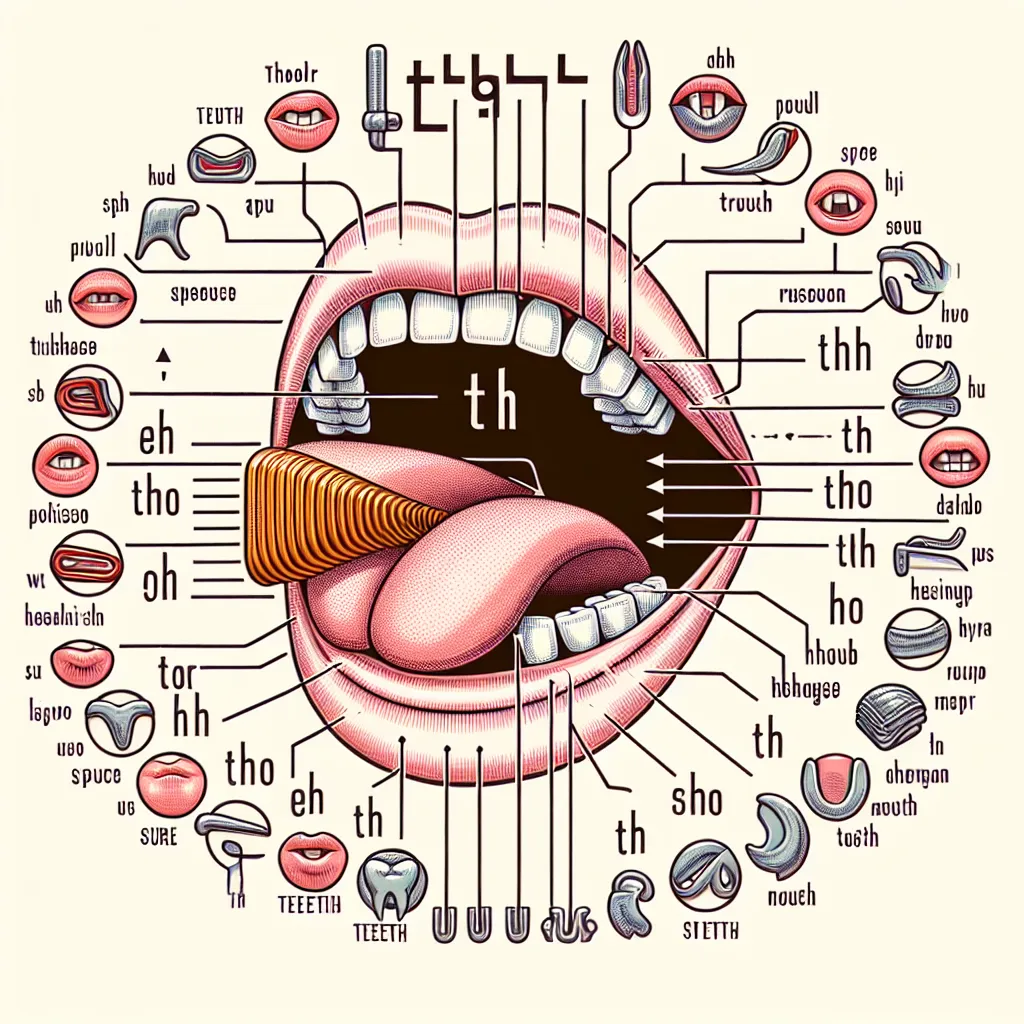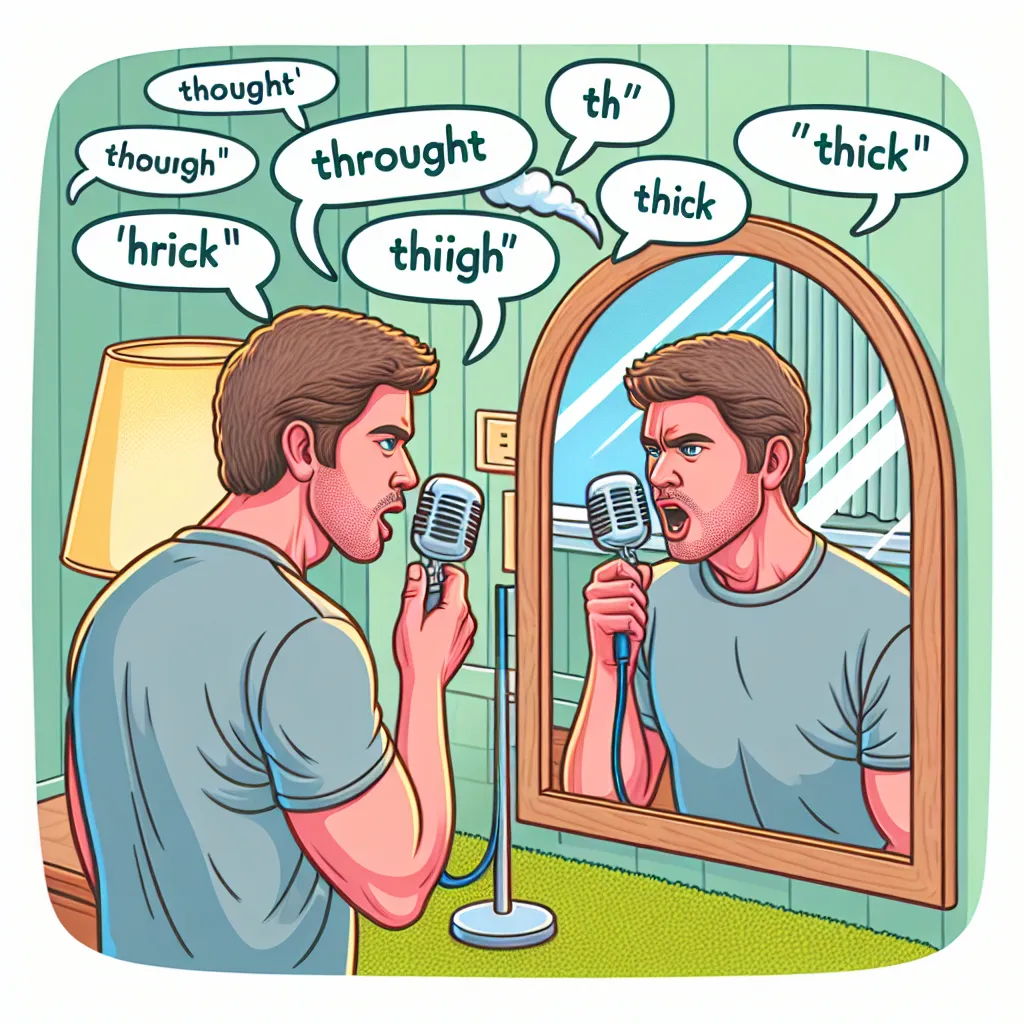Mastering the English “th” sound is crucial for clear and accurate pronunciation. This guide will help you understand and practice this unique sound, which is often challenging for non-native speakers.
Understanding the English TH Sound
The “th” sound in English is actually two distinct phonemes: the voiced /ð/ and the unvoiced /θ/. These sounds are produced by placing the tip of your tongue between your upper and lower front teeth.
Voiced TH Sound /ð/
The voiced “th” sound /ð/ is produced with vocal cord vibration. It’s found in words like:
- This
- That
- There
- Mother
- Breathe
Unvoiced TH Sound /θ/
The unvoiced “th” sound /θ/ is produced without vocal cord vibration. It appears in words such as:
- Think
- Three
- Mouth
- Bath
- Breath
 English TH Sound Diagram
English TH Sound Diagram
Common Mistakes and How to Avoid Them
Many learners struggle with the “th” sound, often substituting it with similar sounds from their native language. Here are some common errors and tips to correct them:
-
Substituting /s/ or /z/ for /θ/ or /ð/
- Incorrect: “Sink” instead of “Think”
- Practice: Place your tongue between your teeth, not behind them.
-
Using /t/ or /d/ instead of /θ/ or /ð/
- Incorrect: “Dat” instead of “That”
- Practice: Ensure your tongue touches your front teeth, not the roof of your mouth.
-
Pronouncing /f/ or /v/ instead of /θ/ or /ð/
- Incorrect: “Free” instead of “Three”
- Practice: Keep your tongue visible between your teeth, not hidden behind your lower lip.
Effective Practice Techniques
To improve your “th” sound pronunciation, try these methods:
-
Mirror Practice: Watch your tongue placement in a mirror as you practice.
-
Tongue Twisters: Use phrases like “The thirty-three thieves thought that they thrilled the throne throughout Thursday.”
-
Minimal Pairs: Practice words that differ only in the “th” sound, such as “thin” vs. “sin” or “they” vs. “day.”
-
Exaggeration: Initially, exaggerate the sound by sticking your tongue out further than necessary.
-
Record and Compare: Record yourself and compare it to native speaker pronunciations.
For more general pronunciation tips, check out our article on how to improve English pronunciation.
The Importance of Proper TH Sound Pronunciation
Correctly pronouncing the “th” sound is essential for clear communication in English. It helps:
- Avoid misunderstandings (e.g., “three” vs. “free”)
- Improve overall comprehensibility
- Enhance confidence in speaking English
Moreover, mastering this sound can significantly improve your performance in casual conversations, making your speech sound more natural and fluent.
Phonemic Chart and Commonly Mispronounced Words
Here’s a simplified phonemic chart focusing on the “th” sounds:
- /θ/ (unvoiced): think, three, mouth
- /ð/ (voiced): this, that, breathe
Ten commonly mispronounced words with “th”:
- Clothes /kloʊðz/ (not /kloʊz/)
- Months /mʌnθs/ (not /mʌns/)
- Sixth /sɪksθ/ (not /sɪks/)
- Threaten /ˈθretn/ (not /ˈtretn/)
- Booth /buːθ/ (not /buːt/)
- Thyme /taɪm/ (silent ‘h’)
- Thames /temz/ (pronounced like “Tems”)
- Rhythm /ˈrɪðəm/ (not /ˈrɪtəm/)
- Underneath /ˌʌndərˈniːθ/ (not /ˌʌndərˈniːt/)
- Hypothesis /haɪˈpɒθəsɪs/ (not /haɪˈpɒsəsɪs/)
Practice these words regularly to improve your “th” sound pronunciation.
 TH Sound Practice Illustration
TH Sound Practice Illustration
Conclusion
Mastering the English “th” sound takes time and practice, but it’s an achievable goal for any language learner. Remember to focus on tongue placement, distinguish between voiced and unvoiced sounds, and practice regularly. With patience and persistence, you’ll see significant improvement in your pronunciation.
For more tips on practicing English sounds at home, visit our guide on how to practice English sounds at home. Keep practicing, and don’t hesitate to seek feedback from native speakers or language teachers. Your efforts will pay off in more confident and clearer English communication.




